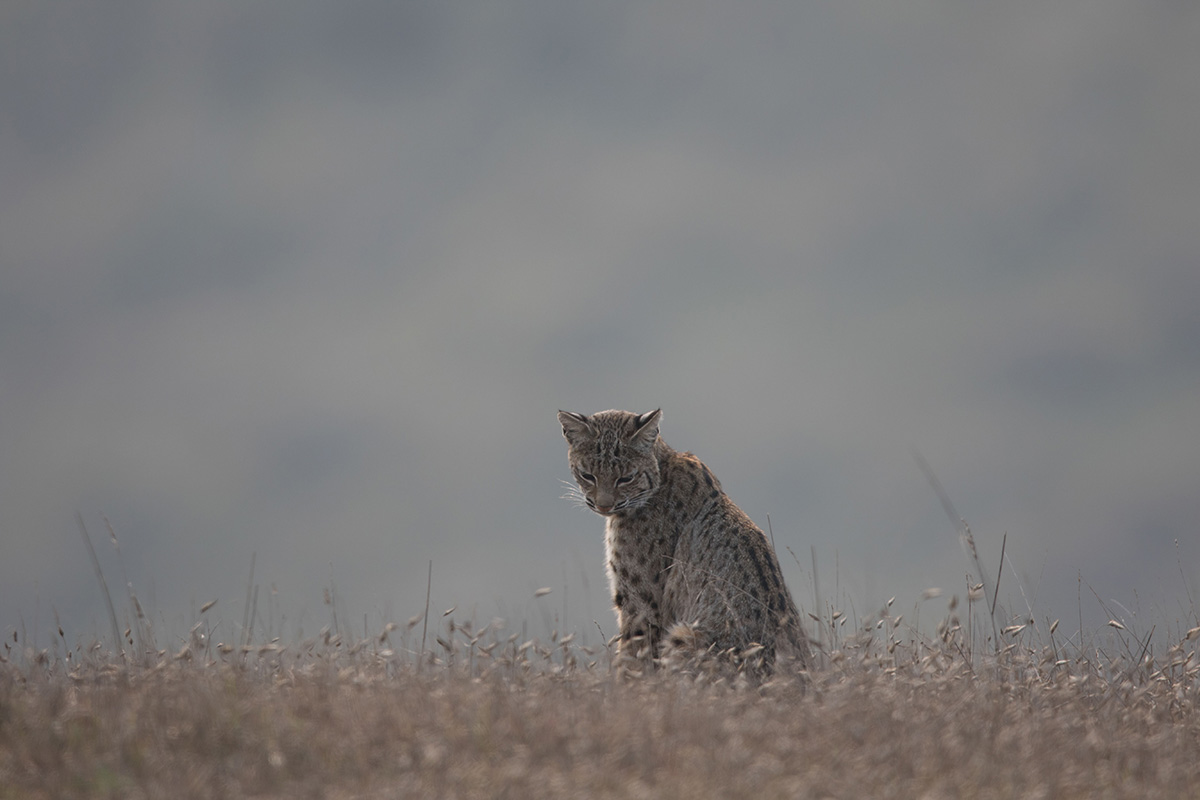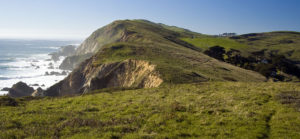The ongoing controversy regarding the future management of Point Reyes National Seashore (PRNS) encompasses the environment, historical preservation, the public will, and more.
The National Park Service (NPS) was sued by three environmental groups in February of 2016, and in the settlement (July 2017) was forced to produce an Environmental Impact Statement (EIS) and update its General Management Plan (GMP) for ranching inside the Seashore. Whereas the process ostensibly was genuine and transparent, in reality the conclusions were foregone; the fix was put in by influential ranchers, politicians sympathetic to them, and the pro-business, anti-environment Trump administration. The EIS, which cost ~$1.5 million, is damning of the ranching and public comments were overwhelmingly opposed to the so-called “preferred alternative,” but regardless, the NPS plans to forge ahead, expanding and entrenching the commercial operations in the park.
There are several arguments put forward in favor of continued ranching in PRNS, among them that the ranchers are good stewards of the land, that the ranches were envisioned as part of the Park by its founders, that the NPS is charged with preserving historic and cultural resources, and that that the ranches and dairies are popular with the public. The problem with these arguments is that they are at best unsubstantiated.
California Senator Diane Feinstein, the ranking member of the Senate Appropriations subcommittee that funds the Department of the Interior, sent an official letter in March of 2016, well before the settlement, to then Secretary of Interior Sally Jewell, urging her to secure the ranches’ status and allow activities which they had lobbied for in a 2014 letter to the NPS, and copied Senator Feinstein and Representative Jared Huffman, in whose district the park lies. In late 2018, after the settlement but before the EIS publication, Representative Huffman introduced a bill (on which he closely collaborated with Senator Feinstein) to entrench the commercial operations and elevate them over natural resource protection in the Seashore (including the killing of native Tule Elk). HR 6687 passed the House but not the Senate. After his bill failed, Representative Huffman succeeded in amending a related “joint explanatory statement” to a February 2019 House spending bill. The statement is not legally binding, but is worth quoting in full:
“The Conferees note that multi-generational ranching and dairying is important both ecologically and economically for the Point Reyes National Seashore and the surrounding community. These historic activities are also fully consistent with Congress’s intent for the management of Point Reyes National Seashore. The Conferees are aware that the Service is conducting a public process to comply with a multi-party settlement agreement that includes the preparation of an environmental impact statement to study the effects of dairying and ranching on the park. The Conferees strongly support the inclusion of alternatives that continue ranching and dairying, including the Service’s Initial Proposal to allow existing ranch families to continue ranching and dairying operations under agricultural lease/permits with 20-year terms, and expect the Service to make every effort to finalize a General Management Plan Amendment that continues these historic activities.”
Read carefully, and consider that the court-ordered EIS is the first and only comprehensive environmental evaluation of ranching in PRNS, and consider that Senator Feinstein and Representative Huffman (whose environmental record is on the whole good, and is on the record saying we must do everything we can to fight climate change), are pre-committing themselves to a position before its publication. Whatever the effect of ranching, they are saying, we expect you to continue it.
And what does the EIS, which was first published in draft in August 2019, say? It says that removing ranches and dairies would significantly benefit the air, water, soil, vegetation, and wildlife. It notes that ranching in PRNS generates 24,000 metric tons of greenhouse gases annually, and that it degrades soil quality, fouls waterways, and promotes invasive species. It treats the elk as a special sub-category of wildlife and indicates that they are better off if not shot. In summary, it says that ranching in Point Reyes is “ecologically important” only in the same sense in which coal mining is ecologically important to Appalachia.
It is frequently claimed that ranching was meant to stay in the park from its inception. Representative Huffman describes the “historic ranches in the area Congress always intended to be a pastoral zone where our ranching heritage would be preserved.” But this claim is fraught with hearsay and self-interested bias. The definitive history of the Park, Managing a Land in Motion: An Administrative History of Point Reyes National Seashore, prepared for the National Park Service in 2007, summarizes as follows: “Legislators paid close attention to property owners’ rights, but the ranches and dairies were not elements that the NPS, park supporters, or legislators sought to protect as part of the larger national seashore idea.” By “Congress,” Representative Huffman may mean himself and Senator Feinstein, in the same way Hunter S. Thompson once soberly reported the truth of a rumor which he himself had started. But if he means our federal legislative branch as such, he should produce compelling evidence.
Further, the Berkeley-based environmental writer Ken Brower, who as a teenager read in draft the 1962 legislation for his father, David Brower, the first Executive Director of the Sierra Club who was instrumental in forming the Park, insists that ranching was known to be temporary, and that what allowances there were for retention of use and leases were transitional, part of the deal struck between the government and the ranches to form the park in the first place. This agrees with the administrative history.
The Park’s charter was amended in 1976 to mandate that the land “shall be administered by the Secretary without impairment of its natural values, in a manner which provides for such recreational, educational, historic preservation, interpretation, and scientific research opportunities as are consistent with, based upon, and supportive of the maximum protection, restoration, and preservation of the natural environment within the area…” (Emphasis added.)
Even if one ignores the documented environmental impact violating the second emphasized clause (not that one should), how does the Park’s intended plan preserve history, given the operations are already conspicuously modernized and are slated to undergo yet more changes (diversification of livestock, retail shops, mobile abattoirs, etc.)? It’s like an ad claiming a product is new and improved – well, which is it? The period buildings at the retired Pierce Point Ranch may preserve history, but the mechanized milking stations and state-of-the-art loafing barns elsewhere in the park do not.
Ranching arrived in Point Reyes in the mid-19th century, as elk and grizzly were being extirpated, and indigenous people were suffering a genocide, all to secure land for the settlers. So there remains an awkward question, whose history is being preserved? Is it white, colonial history, when we were at the peak of our extractive powers, our ignorance regarding their consequences, and our cultural exceptionalism?
According to Theresa Harlan, who is Kewa (enrolled member of Santo Domingo Pueblo), and the adopted daughter of Liz Campigli Harlan (Coast Miwok, Tomales Bay), “what we are seeing is the long-standing practice of government, in partnership with wealthy individuals, to embed racism into the fabric of our society for the privileged. The Coast Miwok people are left with 1.5 acres of the park and no historic status to recognize over 10,000-years of history on indigenous land. European Settlers, who have a 150-year history here, deny Coast Miwok people the respect due to them as the first people of these lands but were happy to exploit their labor. Ironically, these same settler ranches were granted historic status and the descendant ranchers are given 28,000 acres to continue to exploit and profit from land that is stolen. This land was then sold to taxpayers just fifty years ago. As taxpayers, my family and I subsidize these same ranchers. I don’t think there is an agency or a politician who supports this who has not claimed they are committed to equity and social justice. This is not how you welcome all Americans to a national park.”
The Park’s EIS, meanwhile, says removing ranching from Point Reyes altogether, “would eliminate a unique experience for visitors to experience the role of ranching in California.” But there are tours, farm-stays and food excursions available in private ranches throughout Marin and Sonoma, including historic ranches on the East shore of Tomales Bay, literally in line of sight from PRNS. Approximately 50 percent of land space in Marin County is farms or ranches, and one has to drive through hundreds of acres of ranchland to reach the Seashore in the first place. To suggest what the park offers is unique is, well, dubious.

Senator Feinstein and Representative Huffman claim that the public, who owns the National Seashore, likes the ranches. The Representative described Point Reyes as “a unique mosaic which most people love pretty much the way it is.” But as part of the scoping process for the new plan, the Park Service was legally obliged to accept public comments. More than 7,600 comments were received, an analysis of which shows that 91 percent oppose the plan to continue ranching and 94 percent of those with any preference favor the plan that eliminates ranching altogether. The NPS’s final EIS largely ignores the public comments and excludes the majority of them from their definition of “substantive,” which is to say they do not call out technical matters of process, but instead are mere expressions of value, such as, it is wrong to kill native wildlife in national parks. It seems that Congressman Huffman’s appraisal of the public’s attitude, like his overall position on the matter, predates the publication of the EIS.
Additionally, the vast majority of the comments received by the California Coastal Commission during their consistency review of the proposed plan are critical, especially concerning the plans for elk “management.” In response to the “high level of public interest,” the Coastal Commission asked the NPS to extend its review date to March, 2021. The NPS, with a straight face, extended the review period to January 20th – inauguration day.
When Representative Huffman’s position and motivations on PRNS were recently criticized, he said “virtually every North Bay elected official and many community/enviro leaders agree with me.” It’s true that he and Senator Feinstein have done a good job of galvanizing key members of the state and federal government for their cause, including noted anti-environment Congressmen Rob Bishop, who co-sponsored the failed 2018 bill. Another ally on this matter is President Trump, who invited a prominent Point Reyes rancher, Kevin Lunny, to the White House for a photo-op, after a lease Mr. Lunny had acquired inside the Seashore was allowed to expire, forcing him to close his oyster company operation in designated potential wilderness. President Trump told Mr. Lunny, “We’ll have somebody right here in the White House looking at it, Kevin, so this doesn’t happen to other people.”
But when one considers the weakness of the justifications that Representative Huffman and Senator Feinstein offer, the image that emerges is of an awkward cohort they have conjured, rather than a bipartisan consensus they have joined. Hopefully, a new administration which has stated its commitment to diversity and climate change will take the time to hold hearings with stakeholders beyond the ranchers, who have to-date been the only voice setting direction. One of the alternatives supposedly under consideration is removing ranches and dairies from the park altogether. A truly genuine and transparent process would likely yield not just another accommodating step towards climate disaster, but rather a hallmark of democratic processes, which can stop, turn, and walk the other way.




